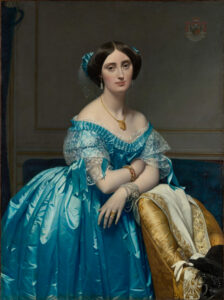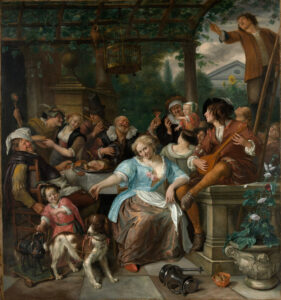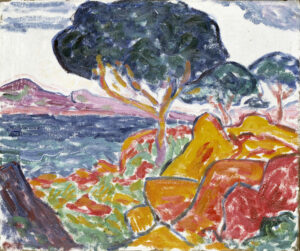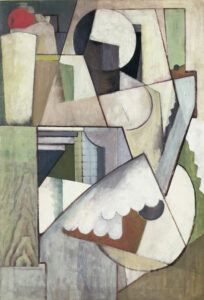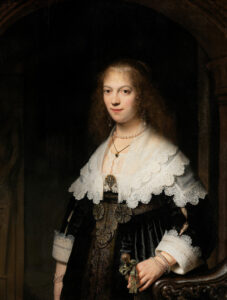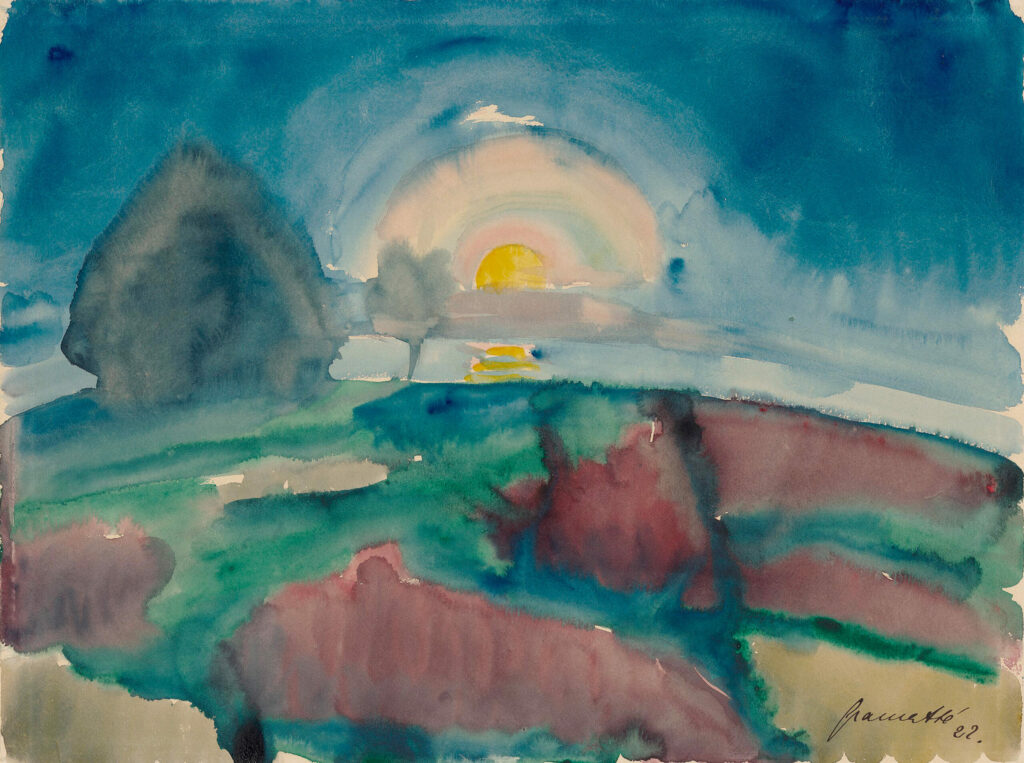
This watercolor on paper demonstrates Walter Gramatté’s stylistic evolution toward a lyrical abstraction imbued with Expressionism.
The work depicts the landscape of Hiddensee Island in the Baltic Sea, where the artist stayed on several occasions. The watercolor technique is employed with great freedom: the pigments diffuse, blend, and create effects of transparency and layering. The palette oscillates between deep turquoises, emerald greens, and delicate mauves, punctuated by yellow touches that convey the lunar reflection on the water. Cool colors dominate, establishing a contemplative nocturnal atmosphere. The artist favors suggestion over description, emotion over faithful representation, positioning this work within an Expressionist approach where landscape becomes a projection of the soul.
Further information
- Walter Gramatté, Moonrise (on Hiddensee), 1922, Bavarian State Painting Collections – Modern Art Collection of the Pinakothek der Moderne Munich
- Watercolor, 36.5 x 49 cm
- https://www.sammlung.pinakothek.de/de/artwork/apG9nQZq4Z/walter-gramatte/mondaufgang-auf-hiddensee
Walter Gramatté (1897-1929), German painter and draftsman, embodies the sacrificed generation of German Expressionism. Born in Berlin, severely wounded during World War I, he underwent an amputation that did not diminish his artistic determination. Trained at the Berlin Academy of Fine Arts, he developed a personal style blending Expressionism, Symbolism, and tendencies toward abstraction. His works, marked by an intense palette and nervous handling, explore themes of landscape, portraiture, and self-portraiture with psychological intensity. Hiddensee Island, a refuge for artists and intellectuals, became for him a privileged place of inspiration where he captured the changing atmospheres of the Baltic. His career, abruptly cut short by his premature death, left a significant body of work testifying to a constant search between figuration and abstraction.


